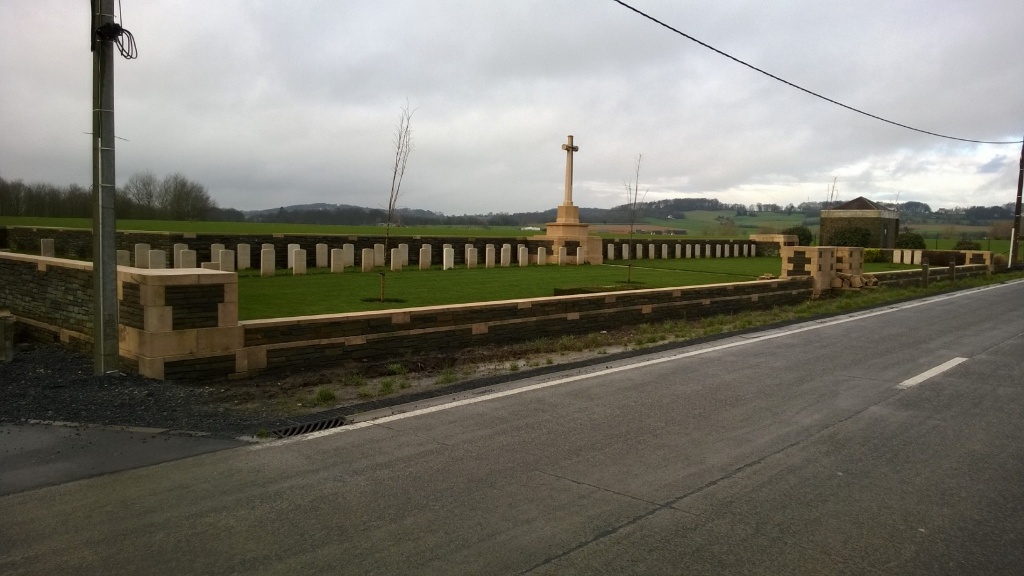Locre No.10 Cemetery
- Country Belgium
- Total identified casualties 47 Find these casualties
- Region West-Vlaanderen
- Identified casualties from First World War
- GPS Coordinates Latitude: 50.77189, Longitude: 2.77698
Location information
Locre No. 10 Cemetery is located 11.5 Kms south-west of Ieper town centre, on a road leading from the Dikkebusseweg (N375). From Ieper town centre the Dikkebusseweg is reached via Elverdingsestraat, straight over a roundabout onto J.Capronstraat (for 30 metres), then left along M.Fochlaan. Immediately after the train station, the first right hand turning is the Dikkebusseweg. On passing through the village of Dikkebus the road continues for 6 Km to the village of Loker. Continuing through the village of Loker the road becomes the Dikkebusstraat which runs for 2 Km to the village of Dranouter. The cemetery is located 1.5 Kms after this turning on the right hand side of the road.
Visiting information
Wheelchair access with some difficulty.
For further information regarding wheelchair access, please contact our Enquiries Department on telephone number: 01628 634221
History information
Locre (now Loker) was in Allied hands during the greater part of the war, and field ambulances were stationed in the Convent of St. Antoine. The village changed hands several times between 25 and 30 April 1918, when it was recaptured by the French. The hospice, or convent, was the scene of severe fighting on 20 May, but was not retaken until first week in July.
Locre No.10 Cemetery is one of a number made by the French troops in the Spring of 1918, but the graves of 248 French soldiers were later removed to another burial ground. The Commonwealth and German graves were brought into the cemetery from the battlefields after the Armistice.
The cemetery now contains 58 Commonwealth burials and commemorations of the First World War. 14 of the burials are unidentified but there are special memorials to three casualties known or believed to be buried among them. Only three of the 75 German burials are identified.
The cemetery was designed by W H Cowlishaw.



